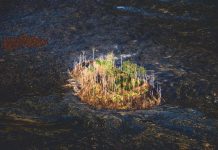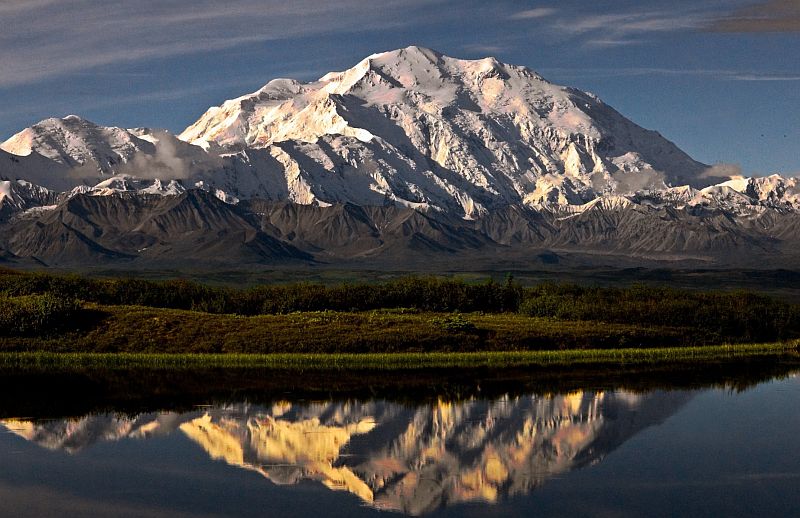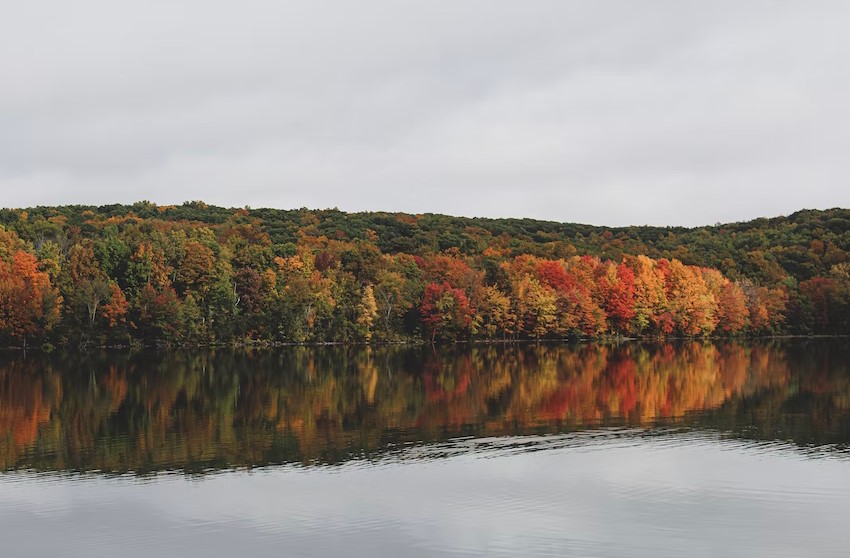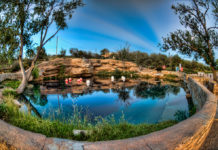Abraham Lake is an artificial lake on the North Saskatchewan River in western Alberta, Canada. The Lake has a surface area of 53.7 km2 and a length of 32 km. The striking Abraham Lake is home to an unusual phenomenon that needs to be seen to be believed. Abraham Lake was created in 1972, with the construction of the Bighorn Dam.
Trapped under its frozen surface, methane gas creeps its way up, producing lovely air bubbles. It freezes and melts and freezes and melts as the flammable element searches for its way out. Methane is formed when plants & animals in the lake sink to the bottom and react with the bacteria in the water.
The bacteria begin to break down the organic matter, decomposing it and gradually releasing the gas. Generally, the gas floats its way to the top of the lake, where it is released into the air, but when the lake freezes over, methane skirmishes a little more to find its freedom.
Its hardship shapes moving images, leaving admirers breathless. Frozen in the ice are other worldly features, which are so breathtaking and exclusive that they draw photographers from the world over. In the bluish tinge of the winter’s ice, photographs capture puffy pedestals of gas, cotton-like bubbles frozen in time, and milky stains that color the frozen surface.
Although this lake is man-made, it has color as other glacial lakes in the Rocky Mountains, which is mainly caused by rock flour as in other glacial lakes. When Abraham Lake is frozen, much older methane from deep beneath the Earth’s crust and ancient oceans remain trapped at the bottom of the lake as a white rock substance recognized as methane hydrate.
As the lake warms up, the methane seepages and comes to the surface with combined methane from decomposition, this generates the amazing-looking frozen lake. The effect is compounded by the fact that Abraham is not a natural lake but is the result of the damming of the North Saskatchewan River in northern Alberta in 1972.
The result is an extra organic material, such as trees, grasses, and plants that would normally not be found on a lake bed, decomposing and creating even more methane gas. As climate change takes its toll on northern lakes and seas, scientists fear that methane that has been frozen by permafrost will slowly start to leak into the atmosphere, pumping out as much as 10 times the amount of methane that is currently in the atmosphere from frozen lakes such as Abraham.
This doesn’t just happen in Abraham Lake, either; methane forms in millions of water bodies around the Arctic region as well. Methane is a powerful greenhouse gas that has twenty times the effect on climate change as a similar amount of carbon dioxide over a hundred-year time frame. Unless that is, it is burned first.
To demonstrate that the unscented and colorless gas released from the frozen lakes is methane, ecologists from the University of Alaska Fairbanks bravely lit some of the volatile emissions on an Alaskan lake with some appealing melodramatic results. To do this, the researchers poured warm water onto the ice and then used a digging tool to make a hole, before leaning over the hole with a lighter.
The results were quite explosive and like a firebreather performing from beneath the ice. Interestingly, emissions of methane are on the rise. Ecologist Katey Walter Anthony of the University of Alaska Fairbanks warns, “When we look at how much carbon is in permafrost still frozen and the potential for that permafrost to thaw in the future, we guess that more than 10 times the amount of methane that’s right now in the atmosphere will come out of these lakes.
Although methane seeping from lakes is one thing, it was once believed that permafrost in cold seas had a lot of the gas trapped, yet it appears that this is no longer the case. A 2010 National Geographic article explained that permafrost is actually failing in its ability to preserve this leakage.
Around eight million tons of methane a year are emitted into the air from the Arctic Ocean’s East Siberia Sea alone. Which brings with it the threat of increased global warming. Abraham Lake is an artificial lake on the North Saskatchewan River in western Alberta, Canada. The Lake has a surface area of 53.7 km2 and a length of 32 km.
Also Read: The White Desert of Egypt














